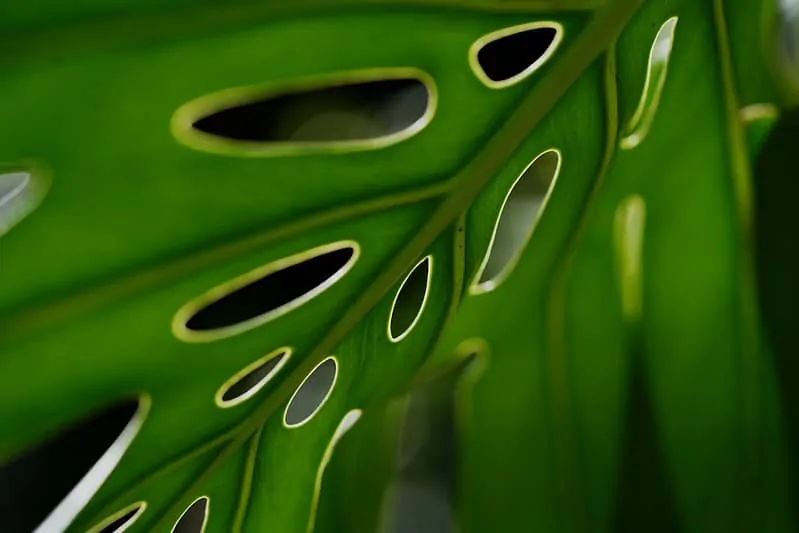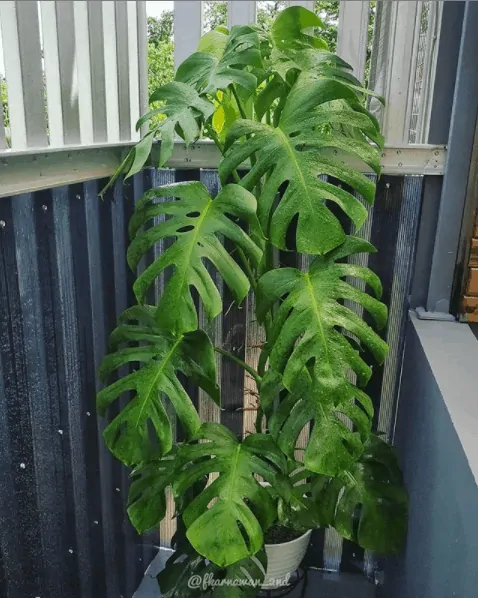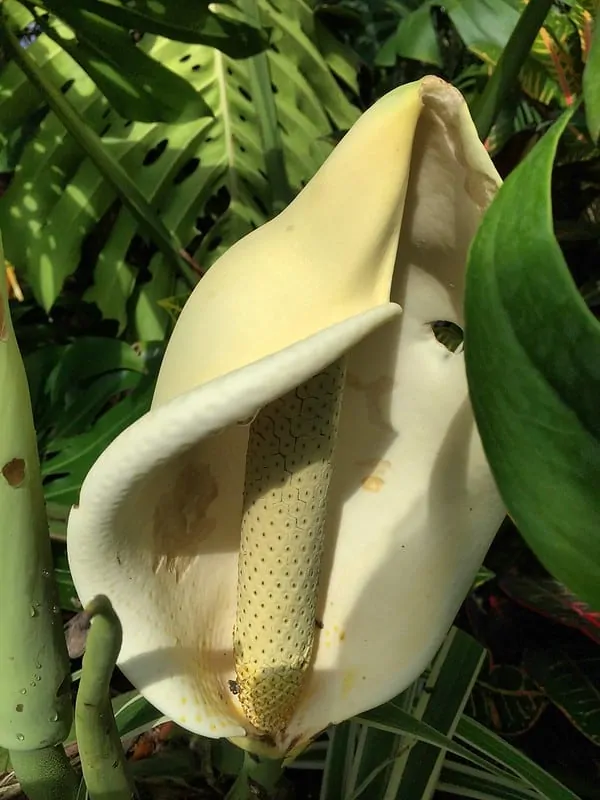Swiss Cheese Plant Care Guide
Learn everything you need to know about your Swiss cheese plant and how to take care of it!
Swiss Cheese Plant 101
The huge, heart-shaped leaves of the Swiss cheese plant (Monstera adansonii), which have holes as the plant gets older, are what give the plant its common name (in a process called fenestration). The leaves resemble Swiss cheese as a result. The Swiss cheese plant, a tropical perennial that is native to Central and South America, is often grown indoors.
It is a type of philodendron and can grow up to 60ft in nature. This is probably why its scientific name means literally “monster”. Due to its beautiful appearance, it was introduced in tropical resorts, but now it has become a little invasive in places like Hawaii.
Do not let either the “delicious” or the “Swiss cheese” fool you. Other than the fruit of the Deliciosa kind, the Swiss cheese plant is toxic to both humans and pets.
The Swiss cheese plant was a popular choice of the houseplant in the 1980s and its distinct leaves made it a staple of waiting rooms, doctor’s offices, and various paintings. It is now making a comeback as a houseplant.

Swiss Cheese Plant Care
-
Light
The Monstera plant is native to rainforests so it is used to light filtered through the canopy above it, so try to avoid placing it in direct sunlight so it will only receive low light. A smaller plant in a little pot would do well on a windowsill but make sure to cover the window with a drape or a piece of semi-transparent paper to protect the plant. If exposed to sunlight the leaves might burn, brown, and crumble.

-
Water
Allow 2-3 inches of soil to dry between watering sessions. Then water abundantly, until the drainage plate starts filling. Wait a few minutes and throw out the excess water. The Monstera plant has partially aerial roots but is still susceptible to root rot, especially if placed in a plastic pot, so it’s better to water it less, rather than more.
-
Humidity
The Swiss cheese plant is used to warm, humid environments, so be sure to provide it with enough humidity. Keep it away from heating vents and air conditioning, as both can dry the air. Instead, use a spray bottle to mist the leaves and stems every 2-3 days, or use a humidifier.
Pro tip: Use the wet stones plate or tray I described in the rosemary care guide to provide cheap and easy permanent moisture to your plants.

-
Temperature
The Monstera plant does well in moderate to warm temperatures, so it should do great in most homes. It should be kept at a temperature of 60 to 80 F or 15 to 27 C, away from vents and AC. Even if it is a bigger plant, you should try to keep it in a circulated room to make sure the temperature doesn’t drop too much in winter. Dedicate a corner to it and it should get enough heat and light there to be happy.
Don’t worry if in summer temperatures rise higher. The Swiss cheese plant is used for warmth so it will be fine. Moisturize it regularly and there will be no problem. It can also withstand lower temperatures for a short period of time, but it will stall its growth. It will use less water during that time as well, so you can leave it and go on vacation without much worry.
-
Pot
Since it tends to grow as large as the pot allows it, the Swiss cheese plant needs a large, heavy pot to counterbalance the growing stem and accommodate the roots. To help drainage and prevent root rot due to too much moisture in the soil, I recommend using an unglazed clay pot. Alternatively, repot it every two years in a pot one size bigger, until it is at the size you want it, then stop.
-
Soil
Use a Nitrogen-rich, peat-based potting mix and aerate it once a year. When roots start poking above the soil, do not cover them back up. Instead, if it seems like the soil is getting too low in the pot, rise the plant and add more at the bottom of the pot. Use this list of potting soils to pick one that fits best!
-
Fertilizer
The Swiss cheese plant uses a lot of nutrients so you need to replenish them with fertilizer. Choose a Nitrogen-rich one, mix it at half the recommended percentage and fertilize no more than once a year. It can be done even more rarely if the pot is big enough. Watch your plant and see if it really needs that boost. If you’re not sure, better wait than overdo it.
Pro tip: You can make a slow-release fertilizer bag by filling a small cloth bag with used coffee grounds and burying it near the side of the pot. Water that area occasionally to release some nutrients and replace the coffee grounds every few months.

-
Support
The Swiss cheese plant leaves are heavy and can start hanging over the edge of the pot, giving it an unkempt look. To avoid that, it is best to allow it to climb on something, as it would in its natural habitat. You can’t allow it to grow on another plant, but you can provide it with a moss stick to latch its areal roots on. Find one at your local gardening store and lightly tie the stems of a few leaves to it to encourage the plant to grow. You could try spraying some diluted fertilizer on the lower parts to invite roots to grow.
-
Pruning
No doubt your Monstera plant will grow too big for your taste at some point. Or maybe there is a leaf that hangs too much toward the room or is in the way. Cut it off with sharp scissors about an inch above the armpit and leave the stump to dry on the spot. Do not peel the dried leaves’ remains as it can damage the stem!
-
Propagation
In nature, the Swiss cheese plant propagates through seeds, but indoors it rarely if ever blooms so it will not produce fruit. However, its incredible resilience and ability to catch roots anywhere will come in handy. Simply cut off a leaf and put it in water, like these other plants you can grow in water, at home. It should sprout roots in a few days to a few weeks and then the new plant is ready to be potted.

Swiss Cheese Plant Care: Summary
Here is a quick summary of the information above, ready to be consulted when needed, and check out this philodendron care guide for more tips!
Light
Semi-shade to bright, avoid direct sunlightWater
Occasionally. Mist regularlyTemperature
60-80 F (15-27 C)Soil
Rich, slightly acidic. Fertilize regularlyToxicity
Mildly toxic for humans, toxic for petsDifficulty
MediumMore Advice On The Swiss Cheese Plant
Monstera Deliciosa is not an easy plant to keep, but if grown to its maximum size and properly cared for it can make you look like an experienced gardener who keeps a greenhouse in their apartment. Pair it up with a lemon tree or other large indoor plants for an even more impressive effect.

Now take a book, a cocktail, and a rattan chair and relax under your Monstera Deliciosa and pretend you are on a tropical island, on vacation. Or take your laptop and a mocktail and imagine you are working from the same tropical island.
Final Thoughts
How is your Swiss cheese plant doing? Was this guide helpful or entertaining? Let me know your opinions and suggestions in the comment section below!



